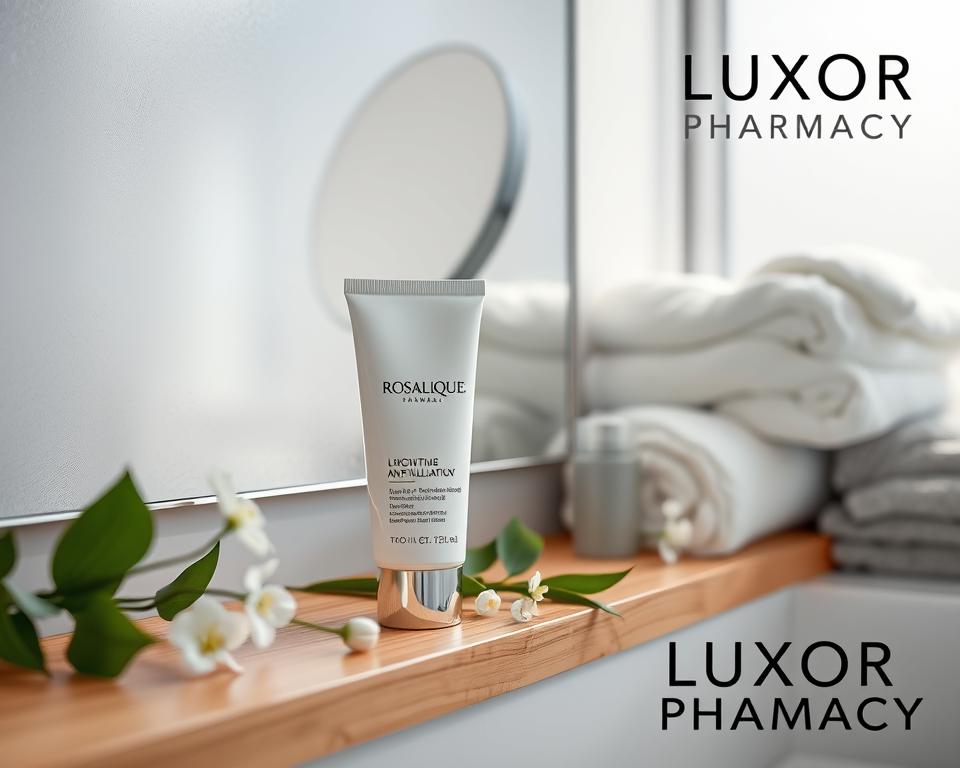Top Hair Color to Camouflage Weakening Hair – Tips
Selecting the right hair color is key when addressing weakening hair. The ideal shade not just improves your appearance but also your self-assurance. It’s important to understand your options, especially for sparse tops or head cover strategies. This manual will illustrate how to choose colors that make your hair appear more voluminous and more dynamic.
Essential Insights
- Choosing the suitable hair color is crucial for concealing fine hair.
- The best hair color for receding hairlines can improve general aesthetic.
- Proper application strategies are crucial for attaining authentic results.
- Using colors that compliment your complexion can enhance confidence.
- Thoughtfully applied highlights can introduce volume to sparse hair using scalp cover up.
- Exploring scalp concealment options provides further confidence.
Significance of Selecting the Suitable Hair Color
Selecting the right hair color is crucial for those with thinning hair. The best shade can either draw attention to or conceal fine areas. Brighter colors can make fine hair seem finer. On the contrary, deeper shades can give the impression of thicker hair, making them a excellent choice for those looking to conceal sparse hair.
When picking shades for thin hair, skin tone and natural hair color are essential. A color that compliments your complexion can make you look more proportionate and dynamic. Trying out different colors and techniques can help identify the best shade that makes your hair look thicker, increasing your confidence and style.
To assist you pick, here’s a table with different hair colors and their impacts on hair volume:
| Hair Color | Effect on Volume | Skin Tone Compatibility |
|---|---|---|
| Light Blonde | Might accentuate fine areas | Fair to light skin |
| Deep Brown | Introduces depth and volume | Medium to warm skin |
| Rich Auburn | Increases vibrancy | Warm skin bases |
| Deep Black | Provides high contrast | Rich skin tones |
| Light Caramel | Minimizes sparsity | Multiple complexion types |
Grasping Thinning Hair and Its Causes
Thinning hair is a common issue that can affect anyone. It stems from a array of causes. Recognizing the different origins of thinning hair is vital for identifying the suitable treatments and styling options. Some typical causes include:
-
Hereditary factors: Genetics often plays a significant role in hair thinning.
-
Endocrine changes: Endocrine changes due to menopause, pregnancy, or thyroid issues can cause hair loss.
-
Nutrient deficiencies: Not getting enough vitamins like Biotin or minerals like iron can weaken hair.
-
External factors: Contact with pollution and harsh chemicals can damage hair and scalp.
It’s also important to understand what does a thinning scalp look like. Signs may include a broader hairline, patches of finer hair, or visible scalp. The forms can differ, from widespread sparsity to specific bald spots. Each person’s experience is individual, making it crucial to identify these indicators early for effective color choices.
Optimal Hair Color to Mask Fine Hair
Selecting the appropriate hair color can substantially influence those with weakening hair. Selecting shades that complement your skin shade not only boosts natural beauty but also creates an illusion of volume. Diverse tones can efficiently conceal thinning areas, giving you a lively look while minimizing the visibility of thin areas.
Selecting Shades That Enhance Your Complexion
Comprehending your skin shade is crucial in deciding what color hair hides thinning effectively. Here are some tips:
-
Golden Skin Shades: Choose golden, honey, or caramel shades. These colors add warmth and brightness, redirecting attention from fine patches.
-
Ash-toned Skin: Consider ash blonde, chestnut, or cool brown shades. These tones offer contrast and depth, creating a sophisticated look that maintains interest.
-
Neutral Skin Tones: Adopt rich colors like chocolate brown or auburn, harmonizing warmth and coolness to reach harmony.
Using Highlights to Introduce Dimension to Thin Hair
Adding highlights is an efficient technique for making hair seem more voluminous. Highlights produce visual interest, which can shift from thinning spots. Think about these methods:
-
Balayage: A application technique that gives a natural look while introducing depth.
-
Foiling: Concentrated application of highlights helps in attaining a more organized and dimensional appearance.
-
Lowlights: Richer shades mixed with your base color provide contrast that produces the illusion of thicker hair.
Merging your picked base color with highlights not only hides thinning but also enhances the overall effect, making it one of the top hair color options for sparse tops.
| Skin Tone | Recommended Colors | Highlight Techniques |
|---|---|---|
| Sunny | Amber, Bronze, Toffee | Balayage, Foil Highlights |
| Cool | Silver, Walnut, Midnight Brown | Shadowing, Underlights |
| Universal | Cocoa, Mahogany | Layered Highlights, Blended Techniques |
Advice for Hair Color Products
Choosing the right hair color products can greatly enhance the look of weakening hair. Choosing the best hair color products for thinning hair will not only deliver a rich color but also provide nourishing benefits. Choose formulas strengthened with ingredients like keratin and argan oil, which help sustain hair strength and health. Additionally, using scalp cover up products can successfully conceal bald spots and provide a more voluminous look.
Top Hair Dyes for Sparse Hair
When picking a hair dye for sparse hair, think about these highly recommended options:
-
Clairol Nice ‘n Easy – Known for its rich color and conditioning properties.
-
L’Oreal Paris Excellence Creme – Provides triple protection, ensuring sleek and vibrant results.
-
Schwarzkopf Keratin Color – Enhanced with keratin, this dye reinforces while coloring.
-
Garnier Nutrisse Cream – Offers brilliant color with additional conditioning for shinier hair.
Scalp Cover Up Products and Sprays
To complement your hair dye choice, consider using these efficient scalp cover up products:
-
Caboki – A hair fiber product that sticks to existing hair, making it appear thicker.
-
Keratin Hair Fibers – Disguises thinning areas effectively, blending seamlessly into the scalp.
-
KERANIQUE Scalp Treatment Spray – Delivers a non-heavy, tinted formula ideal for increasing hair volume.
Guidelines for Application and Maintenance
Applying vibrant color on fine hair needs careful attention to application and upkeep. The right maintenance tips for color-treated thinning hair can greatly impact hair health and appearance.
When applying color hair, use a mild method to eschew damaging thin strands. Begin by sectioning hair into parts for even coverage. Apply color from roots to ends, guaranteeing all strands are saturated. Utilize a brush for precise application. Follow the specified time to prevent over-processing.
Post-color care is crucial. Employ sulfate-free shampoos to clean hair without removing color. Regular deep conditioning masks restore moisture and vibrancy. Nourish hair weekly to fortify and shine, especially for sparse hair.
Continuous care is essential to preserving healthy, beautiful hair. Adhering to these maintenance tips for color-treated thinning hair will ensure your color vibrant and your hair healthy.
Using Scalp Tinting Techniques for Improved Results
Scalp coloring is a fantastic way to harmonize hair color with scalp tone, especially for those with sparse hair. It can render the scalp area look more uniform, generating the illusion of thicker hair.
How to Merge Colors for a Natural Look
Effective color blending is key for a realistic scalp tinting look. Commence by choosing a color that complements your hair and scalp. This strategy lessens harsh contrasts. Use a narrow brush to spread the tint in layers, commencing at the hairline and progressing upwards.
This method ensures balanced shades and masks any uneven areas, resulting in a unified look.
Pro Tips for Using Color to Bald Spots
For bald spots, the right products are vital. Choose scalp tinting solutions made for thinning hair. Apply the color in short strokes to mimic hair growth. Add layers, not excessively covering the area.
Professional Treatments to Think About
For those searching for efficient solutions for thinning hair, professional treatments provide advanced options. Strategies like MicroArt Scalp Shading offer outstanding coverage, generating a natural look. Semi-permanent makeup is also in demand for extended results, making it a noteworthy scalp cover for thinning hair.
MicroArt Scalp Shading for Efficient Coverage
MicroArt Scalp Shading uses fine tattooing strategies to mimic hair follicles, resulting in a fuller appearance. This procedure is personalized to individual needs, ensuring a natural look. The accuracy involved reduces discomfort, facilitating a rapid recovery.
Its flexibility fits different skin tones and hair colors. Customers can personalize the shade and density of the scalp cover-up. This makes it a remarkable choice.
Benefits of Semi-Permanent Makeup for Fine Hair
Semi-permanent makeup delivers a easy solution for concealing weakening areas. It persists up to three years, depending on skin type and maintenance. Its natural appearance boosts the hairline while harmonizing with the scalp.
Newer techniques in semi-permanent makeup have been developed to lessen side effects. For those looking for the best scalp cover up, this option ranks highly among available treatments.
| Treatment | Duration | Natural Look | Customization | Recovery Time |
|---|---|---|---|---|
| MicroArt Scalp Shading | 3-5 years | High | Yes | Minimal |
| Semi-Permanent Makeup | 1-3 years | Very High | Yes | Short |
Holistic Solutions for Hair Thickening
Exploring natural solutions for thin hair can reveal efficient, holistic methods to increase hair thickness and vitality. Many individuals seek hair thickening remedies that are gentle yet provide noticeable results. Elements like rosemary oil, biotin, and pumpkin seed oil are particularly helpful. They stimulate hair growth and boost scalp health.
Below is a table detailing some common natural remedies and their benefits:
| Remedy | Benefits | Usage Instructions |
|---|---|---|
| Rosemary Oil | Stimulates blood circulation, promoting hair growth | Mix a few drops with carrier oil and massage into the scalp weekly |
| Biotin Supplements | Supports keratin production, improving hair strength | Take according to package directions daily for best results |
| Pumpkin Seed Oil | Promotes follicle health, may lead to thicker hair | Use as a scalp treatment or add to hair care products |
| Aloe Vera | Moisturizes hair while reducing inflammation on the scalp | Apply fresh aloe vera gel to the scalp, rinse after 30 minutes |
| Massage with Olive Oil | Enhances moisture and promotes healthy hair | Warm olive oil slightly and massage it in, leave for an hour |
These hair thickening remedies can seamlessly fit into your daily routine. They not only nourish but also improve the effects of color treatments, leading to thicker hair. Adopting these natural solutions can successfully convert thin hair into a more full-bodied mane.
Coloring Techniques That Work Best for Women
Choosing the appropriate coloring techniques can significantly improve the look of thinning hair. Women should consider various methods, including highlighting and full color applications. Each method provides unique benefits, particularly in terms of achieving a fuller appearance.
Highlighting vs. Full Color Applications
Highlighting techniques for thin hair can produce a illusion of depth and dimension, making the hair appear thicker. By strategically placing lighter shades, highlights can merge smoothly with the base color, providing an illusion of volume. In contrast, full color applications may lead to a uniform look, which can sometimes emphasize thinning areas. For women with thinning hair, highlights often function as the more favorable option.
Maintenance Tips for Color-Treated Thinning Hair
After coloring, it’s essential to preserve the health of the hair to stop further thinning. Here are some successful maintenance tips:
- Utilize sulfate-free shampoos to preserve color and hydration.
- Moisturize frequently with deep conditioning treatments to strengthen strands.
- Avoid excessive heat styling to minimize damage.
- Schedule regular trims to preserve healthy ends and reduce breakage.
- Consider leave-in treatments to guard and boost hair’s appearance.
Final Thoughts on Hair Color and Thinning Hair
Exploring the best hair color for thinning hair opens up a world where the perfect choice boosts both looks and confidence. Understanding skin tones and using highlights are crucial. These strategies lead you to a lively, healthy look that enhances your self-esteem.
Effective hair care for thinning hair means choosing products suitable to your needs. This ensures every step in your hair care journey enhances your unique beauty. Opting for quality hair dyes and scalp cover-ups assists mask concerns and maintains your hair vibrant.
Self-assurance in hair color comes from understanding how to care for your hair and making smart choices. The advice given here motivates you to make moves towards a fuller, more lively look. It allows you to face the world with confidence.
FAQ
What is the best hair color to hide thinning hair?
For hiding thinning hair, opt for a darker shade that complements your skin tone. This creates an illusion of fullness. Deep browns or soft blacks are effective in camouflaging thinning areas.
How can I cover bald spots with makeup?
Use specialized products like scalp cover up sprays or fibers to blend with your hair color. A tinted scalp color spray can also reduce the contrast between your scalp and hair, making bald spots less noticeable.
What does a thinning scalp look like?
A thinning scalp may show through the hair, with visible patterns of hair loss. Look for widened parts or patches with little hair. These changes help in choosing the right hair color solutions.
Are there specific hair coloring techniques that work best for women with thinning hair?
Yes! Techniques like balayage or highlighting add volume and dimension to thinning hair. They create the illusion of fuller locks. Highlights are often preferred over full color applications for their visual depth.
What are some recommended hair dyes for thinning hair?
For thinning hair, look for dyes with nourishing ingredients like keratin and argan oil. Brands like L’Oréal, Clairol, and Wella offer rich color while promoting hair health.
What natural remedies can help thicken hair?
Natural remedies include using oils like rosemary or pumpkin seed oil to stimulate growth. Biotin supplements also support overall hair health.
How can scalp tinting help with the appearance of thinning hair?
Scalp tinting unifies your scalp color with your hair, creating a seamless look. It’s especially useful for bald spots, enhancing a natural appearance.
What maintenance tips should I follow for color-treated thinning hair?
Use sulfate-free shampoos to protect color vibrancy and incorporate regular deep conditioning treatments. Avoid excessive heat styling to prevent damage.
What professional treatments are effective for thinning hair?
Professional treatments like MicroArt Scalp Shading offer a semi-permanent solution. They provide long-lasting results that blend seamlessly with existing hair. With proper care, these treatments can last up to three years.
What is the significance of choosing the right hair color for thinning crown?
The right hair color for a thinning crown is crucial. It creates balance and harmony with your natural hair, reducing thinning area visibility. Darker shades are often the best choice.



